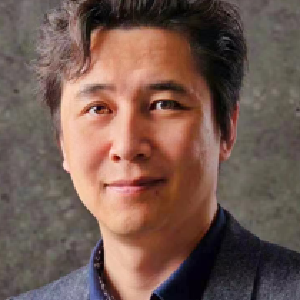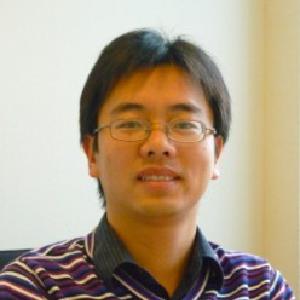May 21st, 2025
Sun Yat-sen University, Shenzhen, China
No.66,Gongchang Road,Guangming District,Shenzhen,Guangdong 518107,P.R.China
Hyo-Sung Ahn | Matrix-Weighted Graphs: Motivations and Theory
Abstract: This talk introduces matrix-weighted graphs as a generalization of scalar-weighted graphs. There are a number of motivations for utilizing the concept of matrix-weighted graphs such as modelling of social networks and trades in economic models, and describing of formation control of multi-agent systems, mechanical and electrical networks and electrical power flows. For coupled networks, matrix-weighted Laplacian can be used for analyzing the dynamic behaviors for both undirected graphs and directed graphs.
Bio: Hyo-Sung Ahn received the B.S. and M.S. degrees in astronomy from Yonsei University, Seoul, South Korea, in 1998 and 2000, respectively, the M.S. degree in electrical engineering from the University of North Dakota, Grand Forks, ND, USA, in 2003, and the Ph.D. degree in electrical engineering from Utah State University, Logan, UT, USA, in 2006. Since July 2007, he has been with the School of Mechatronics and the School of Mechanical Engineering, Gwangju Institute of Science and Technology (GIST), Gwangju, South Korea. He was a Dasan Distinguished Professor (Dasan Professor), from 2013 to 2018. Before joining GIST, he was a Senior Researcher with the Electronics and Telecommunications Research Institute, Daejeon, South Korea. He was a Visiting Scholar with the Colorado School of Mines in 2019. He is currently a Professor with the School of Mechanical Engineering, GIST. Dr. Ahn is a Fellow of ICROS and Senior Member of IEEE, and he is serving as an Editor-in-Chief of International Journal of Control, Automation, and Systems. He is the author of the books Iterative Learning Control: Robustness and Monotonic Convergence for Interval Systems (Springer, 2007), Formation Control: Approaches for Distributed Agents (Springer, 2020), and a co-author of the book Control of Multi-agent Systems: Theory and Simulation with Python (Springer, 2024). He is the recipient of the Presidential Commendation of Korea (2024). His research interests include distributed control, aerospace navigation and control, network localization, and learning control.
Ming Cao | Optimal k-level coverage control using multi-centered Voronoi-like tessellations
Abstract: In this talk, we first define the k-level coverage problem using mobile sensor networks, in which each point in a given (convex) region of interest is simultaneously covered by k individual sensors. This formulation extends the standard setup of sensor network coverage problem by stipulating the stricter requirement of multiple responsible sensors for each region of the tessellation as a result of the partitioning of the region of interest. We use a modified Voronoi-like scheme to find out the (locally) optimal location and associated covering region for the mobile sensors and design a control law that drives individual mobile sensors to the optimal configuration asymptotically.
Bio: Ming Cao has since 2016 been a professor of networks and robotics with the Engineering and Technology Institute (ENTEG) at the University of Groningen, the Netherlands, where he started as an assistant professor in 2008. Since 2022 he is the director of the Jantina Tammes School of Digital Society, Technology and Al at the same university, He received the Bachelor degree in 1999 and the Master degree in 2002 from Tsinghua University, China, and the Ph.D. degree in 2007 from Yale University, USA. From 2007 to 2008, he was a Research Associate at Princeton University, USA. He worked as a research intern in 2006 at the IBM T.J. Watson Research Center, USA. He is the 2017 and inaugural recipient of the Manfred Thoma medal from the Internationa Federation of Automatic Control (IFAC) and the 2016 recipient of the European Control Award sponsored by the European Control Association (EUCA). He is an IEEE fellow, He is a Senior Editor for Systems and Control Letters, an Associate Editor for IEEE Transactions on Automatic Control, IEEE Transaction of Control of Network Systems and IEEE Robotics & Automation Magazine, and was an associate editor for IEEE Transactions on Circuits and Systems and lEEE Circuits and Systems Magazine.He is a member of the lFAC Council. His research interests include autonomous robots and multi-agent systems, complex networks and decision-making processes.
Hyungbo Shim | Consensus of Vector Fields: Adaptation of Heterogeneous Node Dynamics
Abstract: We propose an adaptation mechanism for individual dynamical systems within a network. Initially, each system has distinct dynamics, but over time, adaptation occurs, leading to convergence toward a common vector field. The analysis is based on the blended dynamics theorem. The motivation and practical utility of this work will be explained. This work is currently under review for possible presentation at CDC 2025.
Bio: Hyungbo Shim received his B.S. (1993), M.S. (1995), and Ph.D. (2000) degrees from Seoul National University. He was a postdoctoral researcher at the University of California, Santa Barbara, and is currently a professor at Seoul National University. He has served as an associate editor for Automatica, IEEE Transactions on Automatic Control, and the International Journal of Robust and Nonlinear Control. He is a senior member of IEEE, an IFAC Distinguished Lecturer, and a member of the Korean Academy of Science and Technology. His research interests include stability analysis of nonlinear systems, observer design, disturbance observers, secure control systems, and synchronization in multi-agent systems.
Weiguo Xia | Distributed Formation Safety Control for Unmanned Swarm Systems
Abstract: The report proposes a robust formation control strategy for unmanned swarm systems, which aims to achieve a balance between formation performance and security in a dense obstacle environment. Based on the consensus algorithm and the adaptive security barrier function, we design a novel formation controller. Different from the traditional method, which uses the control obstacle function to construct the quadratic programming to ensure the safety of the unmanned system, the controller provides a closed-form solution with the guarantee of the existence of the solution, which avoids the problem that the quadratic programming is not feasible under multiple constraints. In addition, compared with the method of ensuring the safety of UAV by fixed safety distance, a dynamic safety distance mechanism based on adaptive adjustment of unmanned system speed is further proposed to improve system flexibility and environmental adaptability and meet the needs of obstacle avoidance in different scenarios. Simulation and physical experiments verify the effectiveness and feasibility of the proposed algorithm.
Bio: Weiguo Xia received his bachelor’s and master’s degrees from Southeast University in 2006 and 2009, his Ph.D. from the University of Groningen in 2013, and his postdoctoral research at KTH Royal Institute of Technology in Sweden from 2013 to 2015. He is currently a professor at the School of Control Science and Engineering and the director of the Institute of Complex Systems and Control, Dalian University of Technology. His main research interests include distributed collaborative control, multi-autonomic systems, complex network systems, etc., and he has presided over the National Natural Science Foundation of China Outstanding Youth Fund and general projects, and has been selected as a young top-notch talent in the “Xingliao Talent Program” in Liaoning Province, and serves as an editorial board member of the international journals Systems & Control Letters and IEEE Transactions on Cybernetics.



